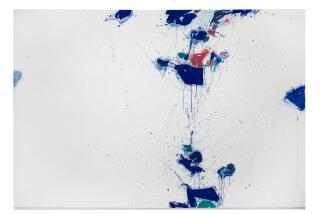Bernard Buffet; Prolific French Painter
Bernard Buffet, the critically scorned but commercially popular French painter who had two museums in Japan dedicated to his work, has committed suicide. He was 71.
Buffet was found Monday by his wife, Annabel, in a hallway near his studio in Tourtour, France, with a plastic bag over his head. Friends said that Buffet had Parkinson’s disease, could no longer paint and told them he was tired of life.
Bucking the trend toward abstract art by his contemporaries, Buffet remained an outspoken advocate and practitioner of figurative painting. He was known for his distinctive black brush strokes and bright colors depicting gloomy elongated faces and buildings, particularly sketches of sad-faced clowns and imperial Russian palaces.
The prolific painter who became a millionaire by the age of 20 could complete a painting in half an hour and created more than 8,000 pictures. Complete with his trademark spiky signature, many were re-created as posters in the 1990s. Originals sell for prices ranging from $90,000 to $1 million.
Buffet’s best notices in France came at the outset of his career but faded quickly. Trained at the Ecole des Beaux Arts in Paris, he gave his first exhibition in 1946 when he was 18. Two years later he received the Prix de la Critique, and in 1955 he was designated one of the 10 best painters of the postwar era by the review Connaissance des Arts.
But France’s most prestigious repository of modern and contemporary art, the Georges Pompidou Center, never bought any of Buffet’s work.
His often gruesome paintings, including a series on the horrors of war, were said to reflect France’s view of itself after the war but became too dreary as the nation emerged from its poverty and depression.
“Bernard Buffet, 30, of Paris, painted the gloom and hunger of the occupation, got rich at it, yet still paints like a starveling while living it up in a 17th-century chateau with park and Rolls-Royce with chauffeur,” Arthur Millier wrote for The Times in 1958 when 24 of Buffet’s canvases were exhibited in Beverly Hills at the Silagy Galleries.
“Buffet perfected his stark, gloomy style while cold and hungry in the capital of a country whose people were angry and confused and felt dishonored. His canvases . . . express stoical despair,” Millier sniffed. “Only a few [people] want a Buffet in their living room; but those few have money and buy at high prices.”
The Los Angeles County Museum of Art staged a Buffet exhibit in 1954.
In Rome, the Vatican Museum devoted an entire room to one of his works. In Russia, Buffet in 1991 became the first living artist to have a retrospective at the Hermitage and Pushkin museums. Japan, which Buffet frequently visited and used as a subject, opened its first museum devoted to his work in 1973.
Until illness overtook him, Buffet staged a major show a year, each with a central theme such as the circus, New York, birds, churches or portraits of his wife. He was an etcher, lithographer, designer and sculptor as well as a painter, and designed sets and costumes for plays and ballets, decorated chapels and illustrated books, including Jean Cocteau’s “La Voix Humaine.”
In addition to his second wife, Annabel, Buffet is survived by three children.
More to Read
The biggest entertainment stories
Get our big stories about Hollywood, film, television, music, arts, culture and more right in your inbox as soon as they publish.
You may occasionally receive promotional content from the Los Angeles Times.










